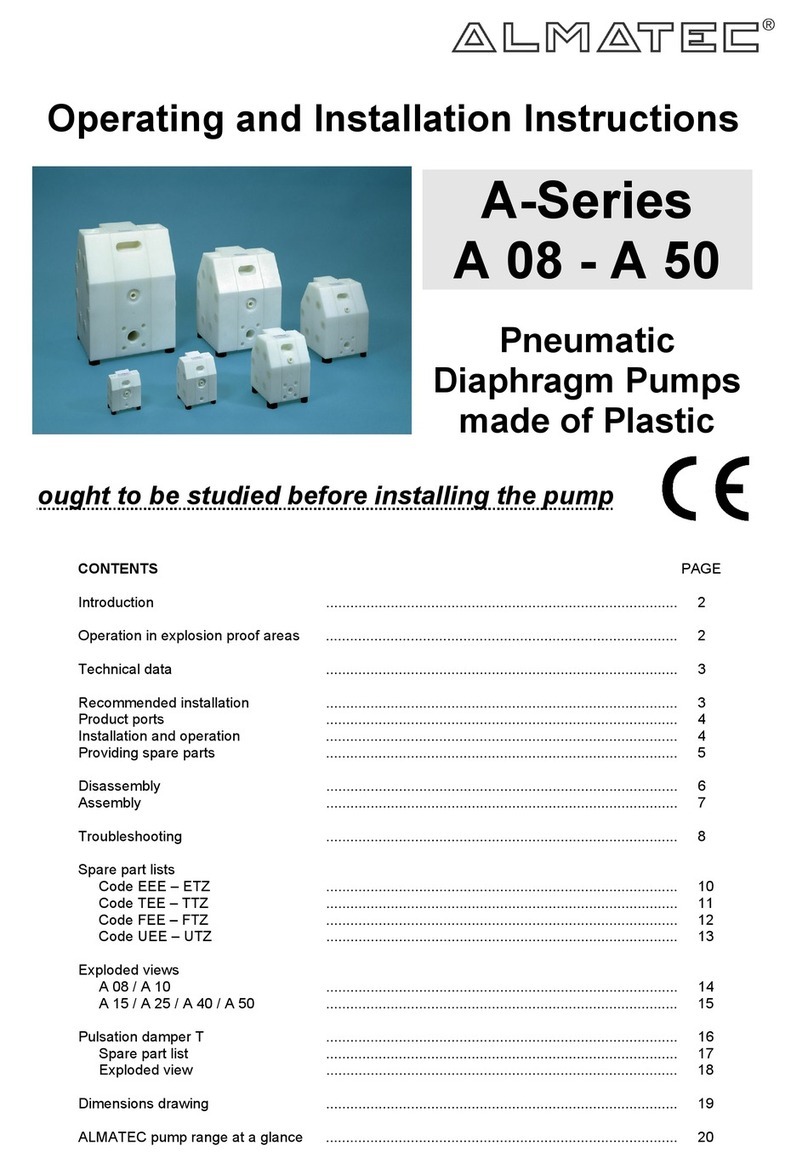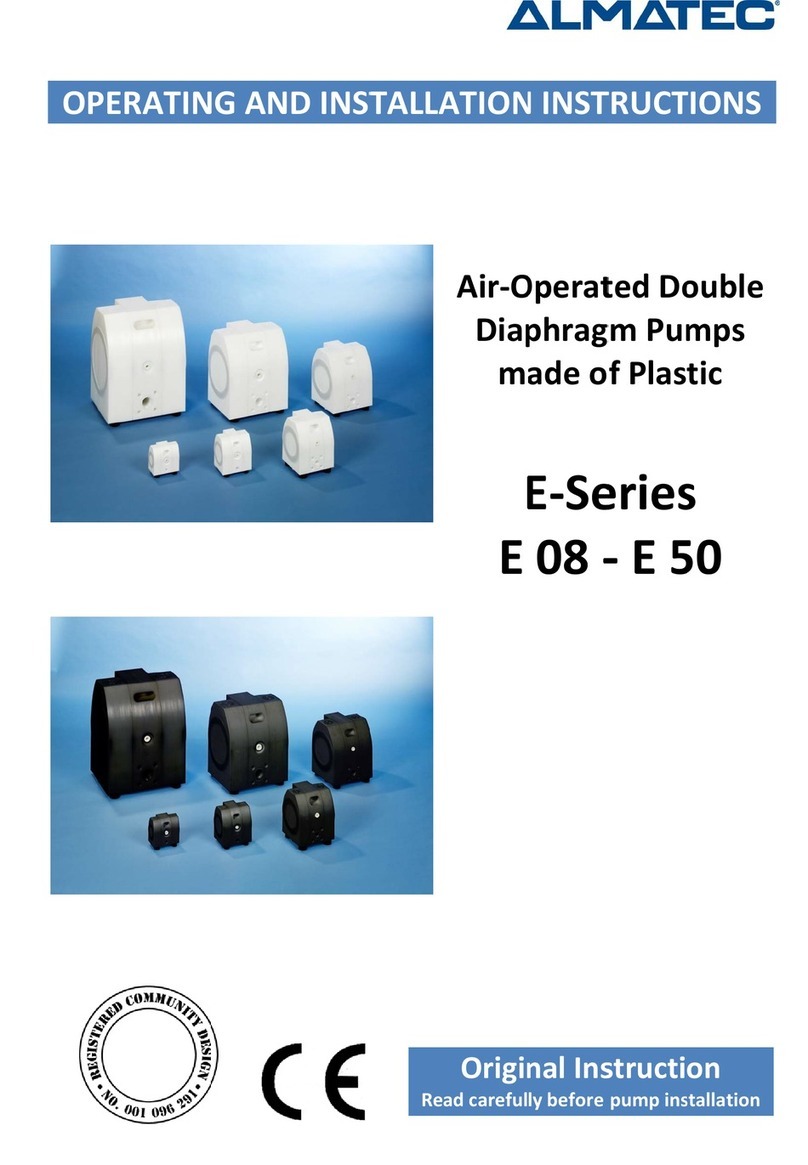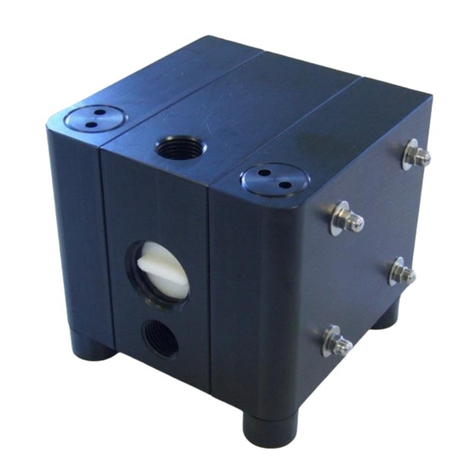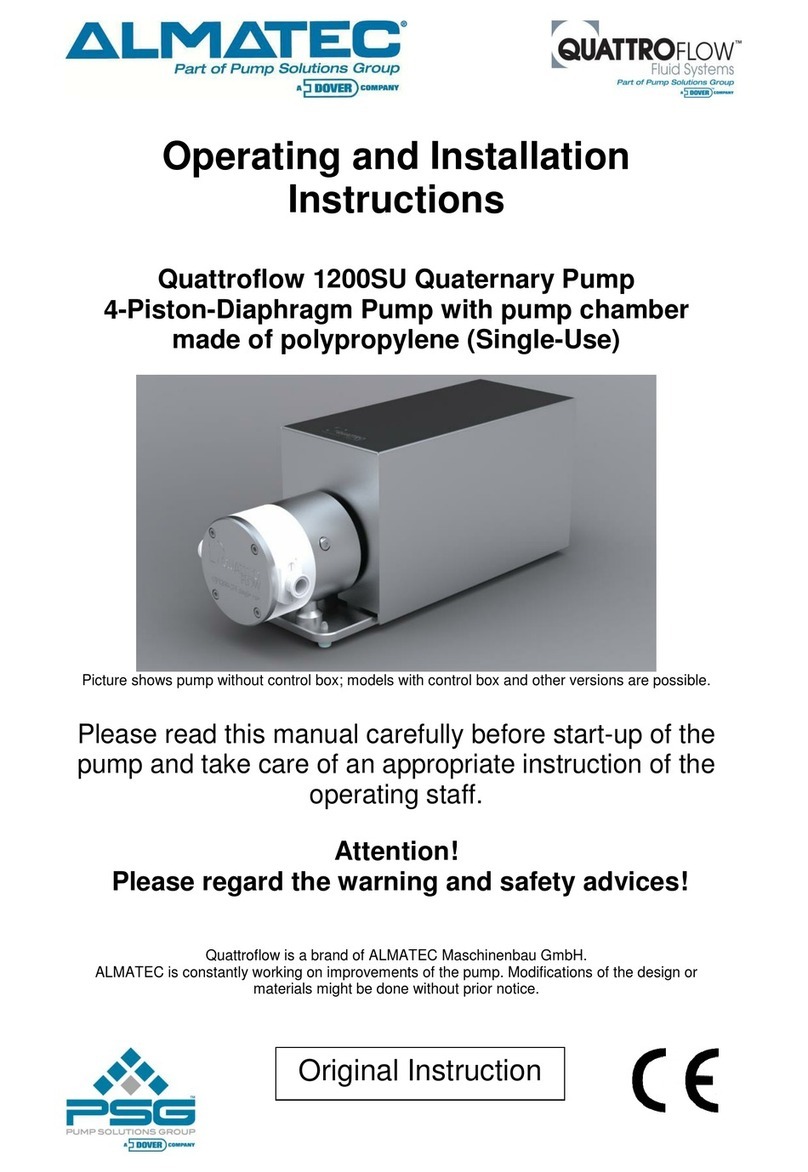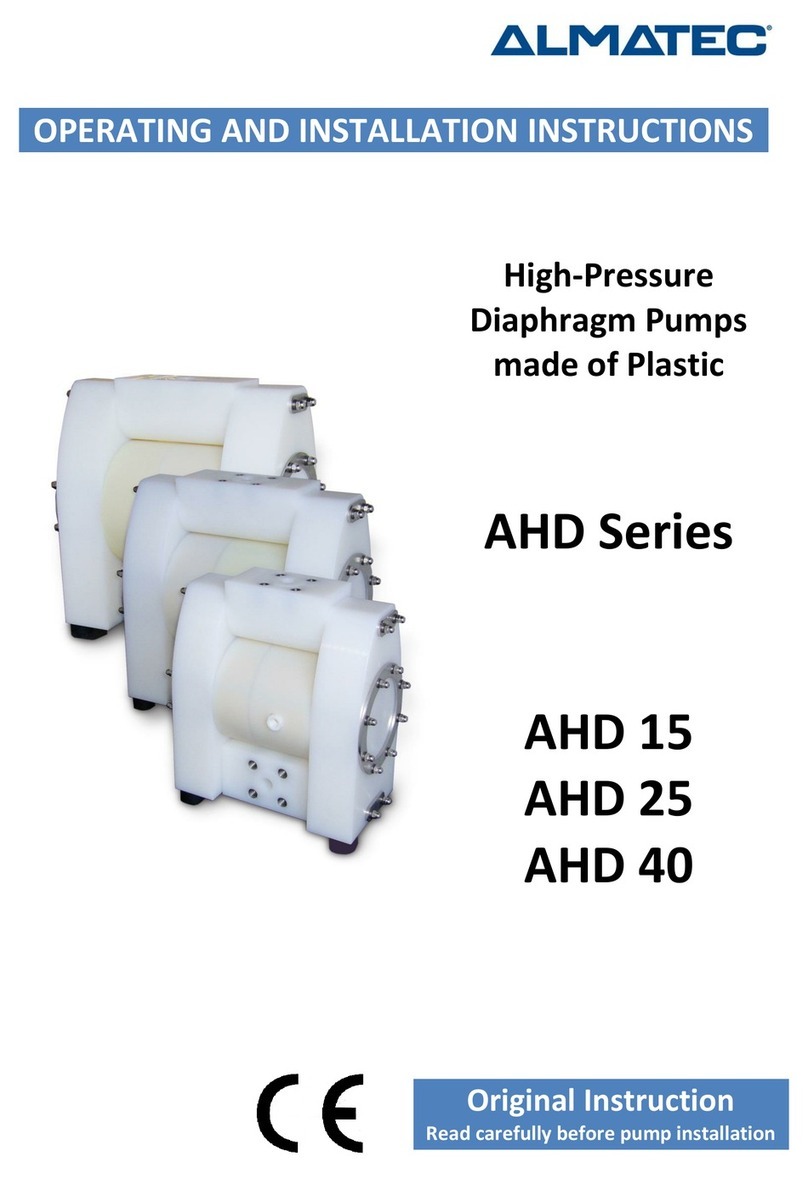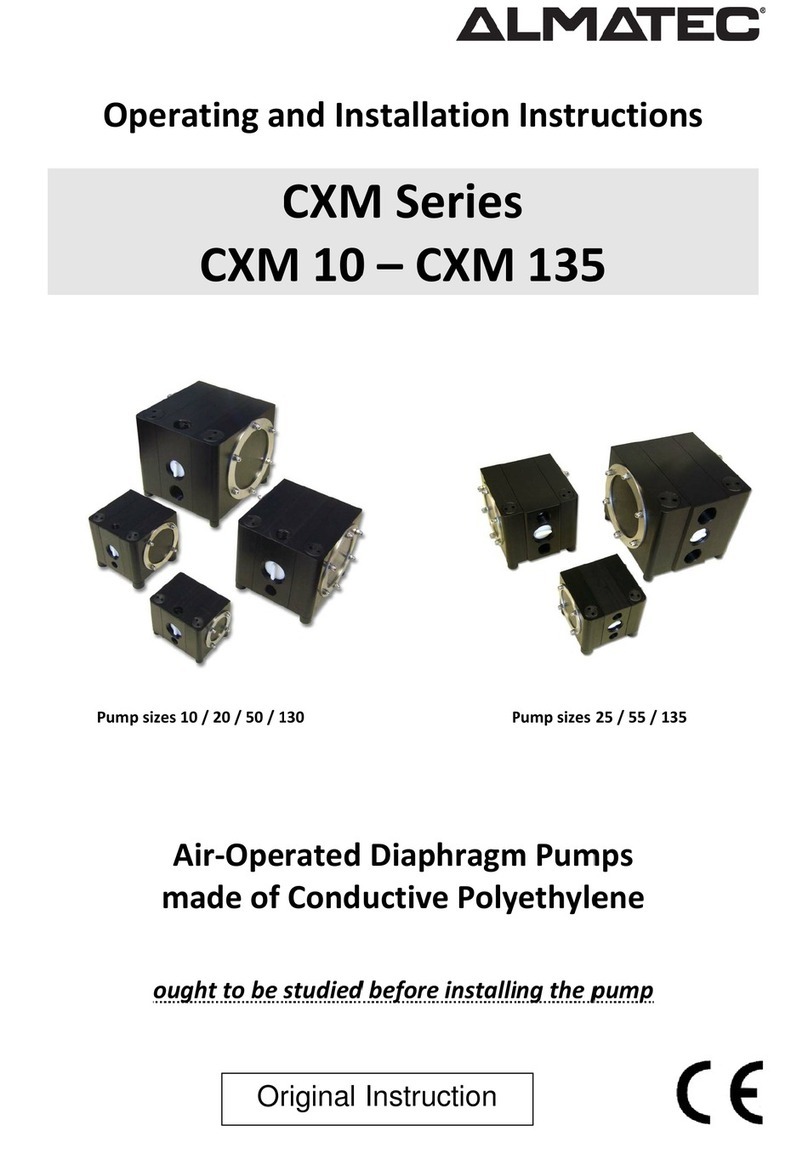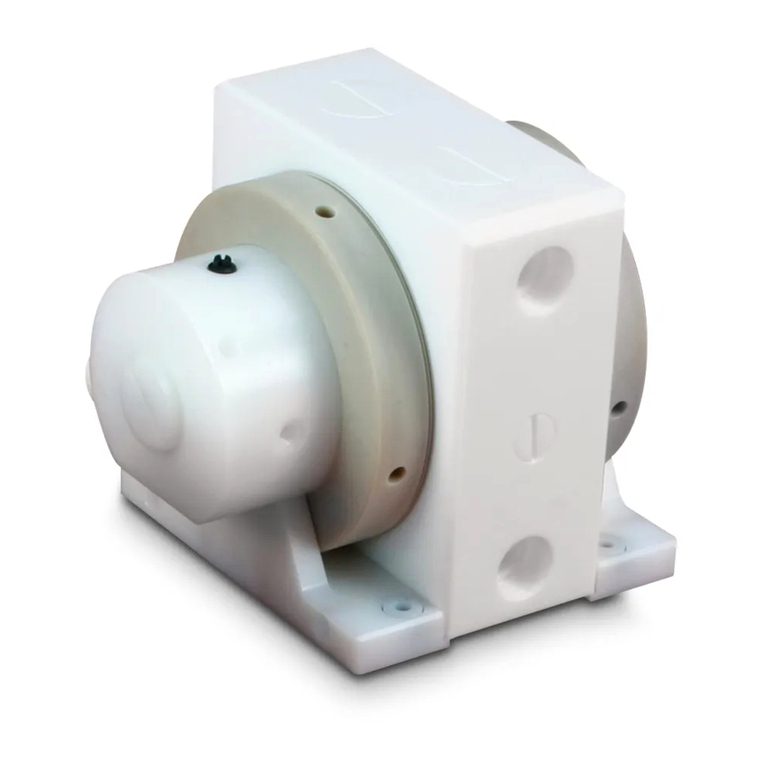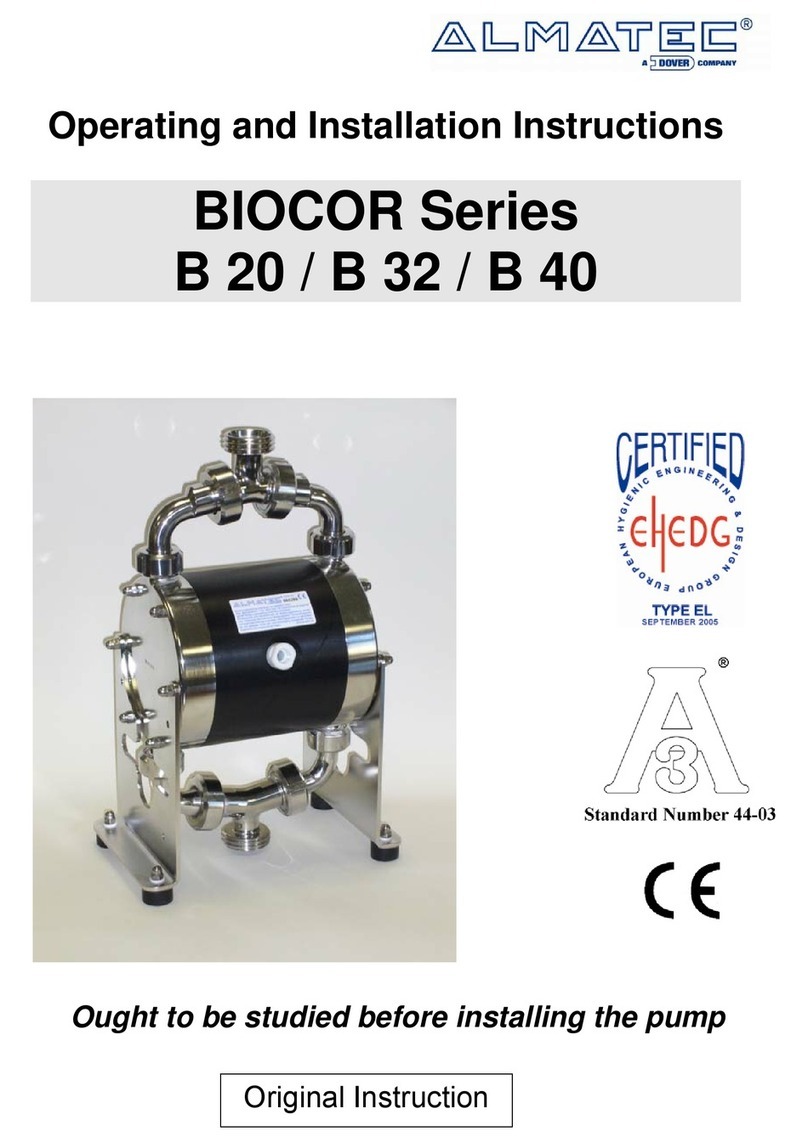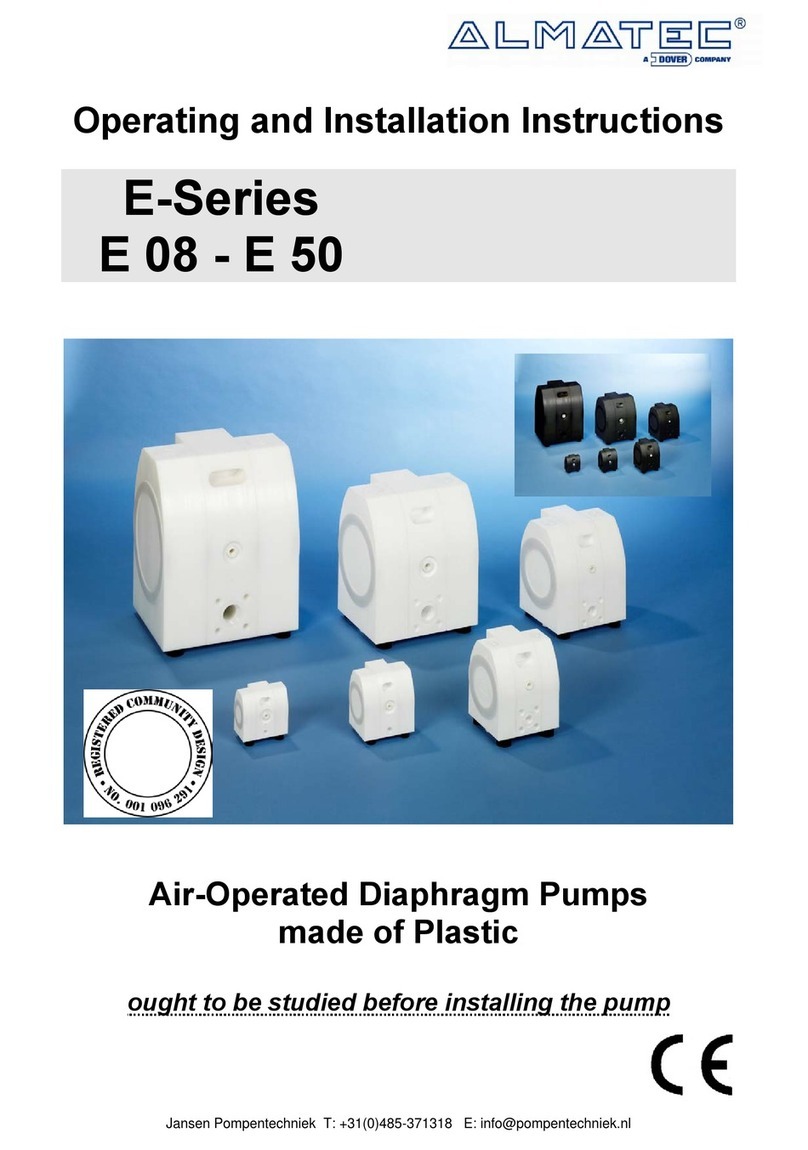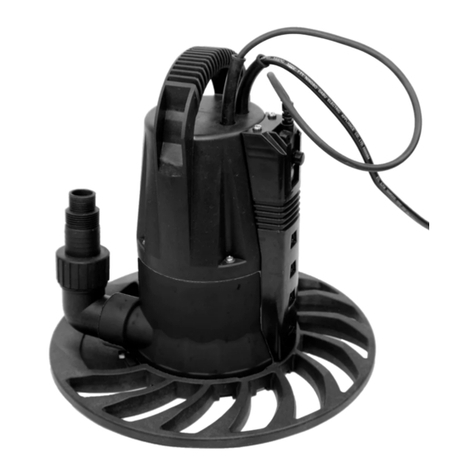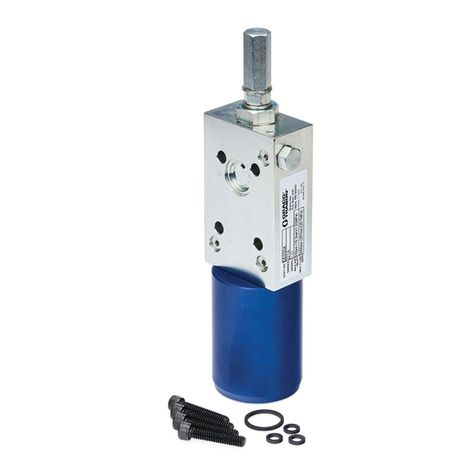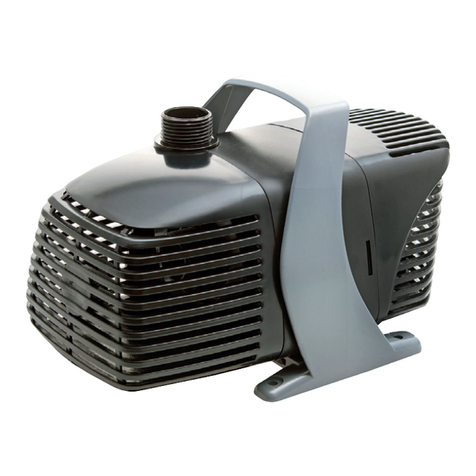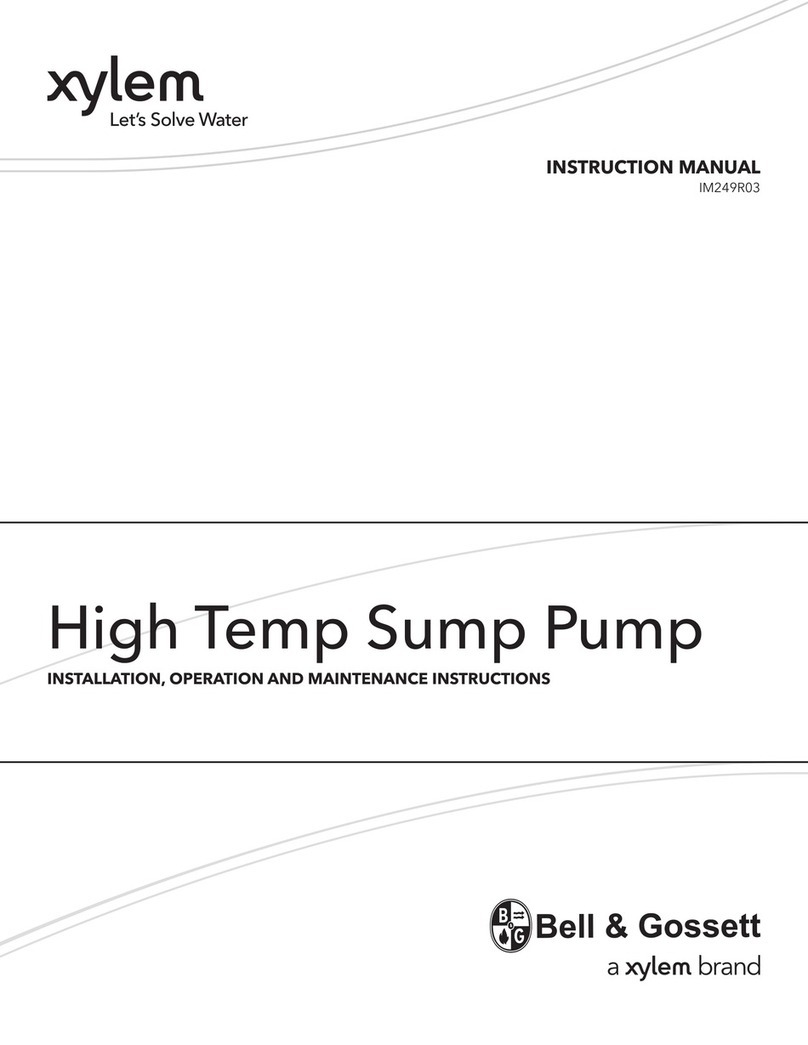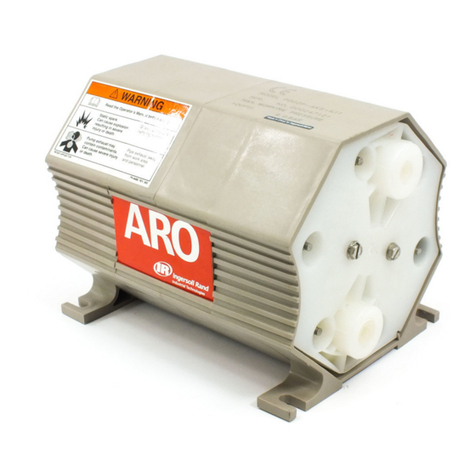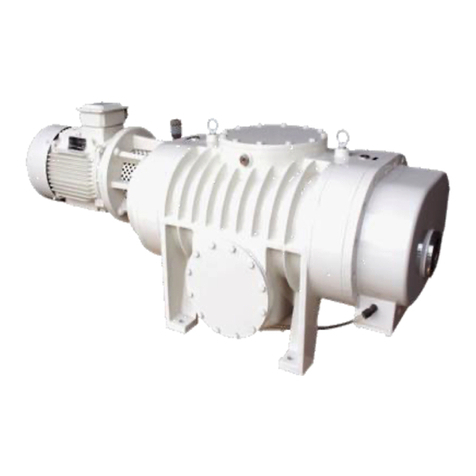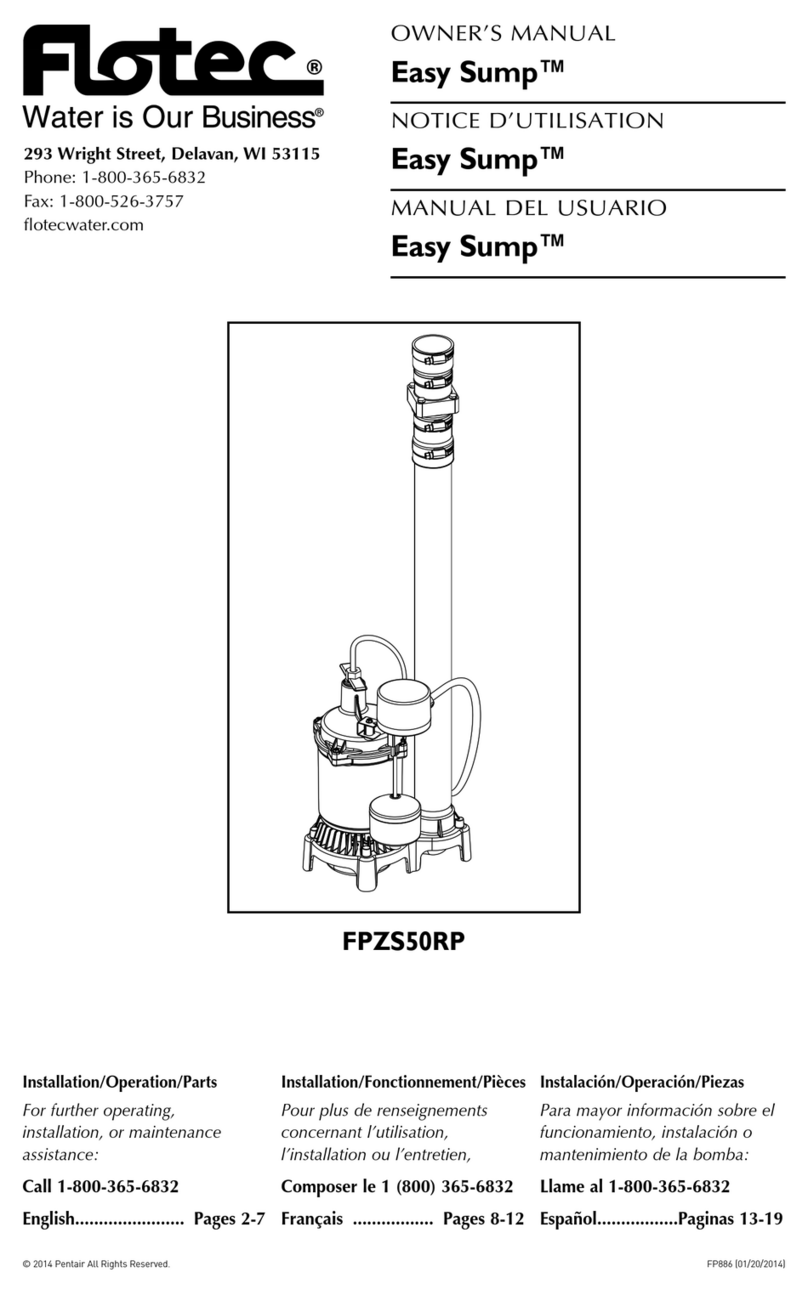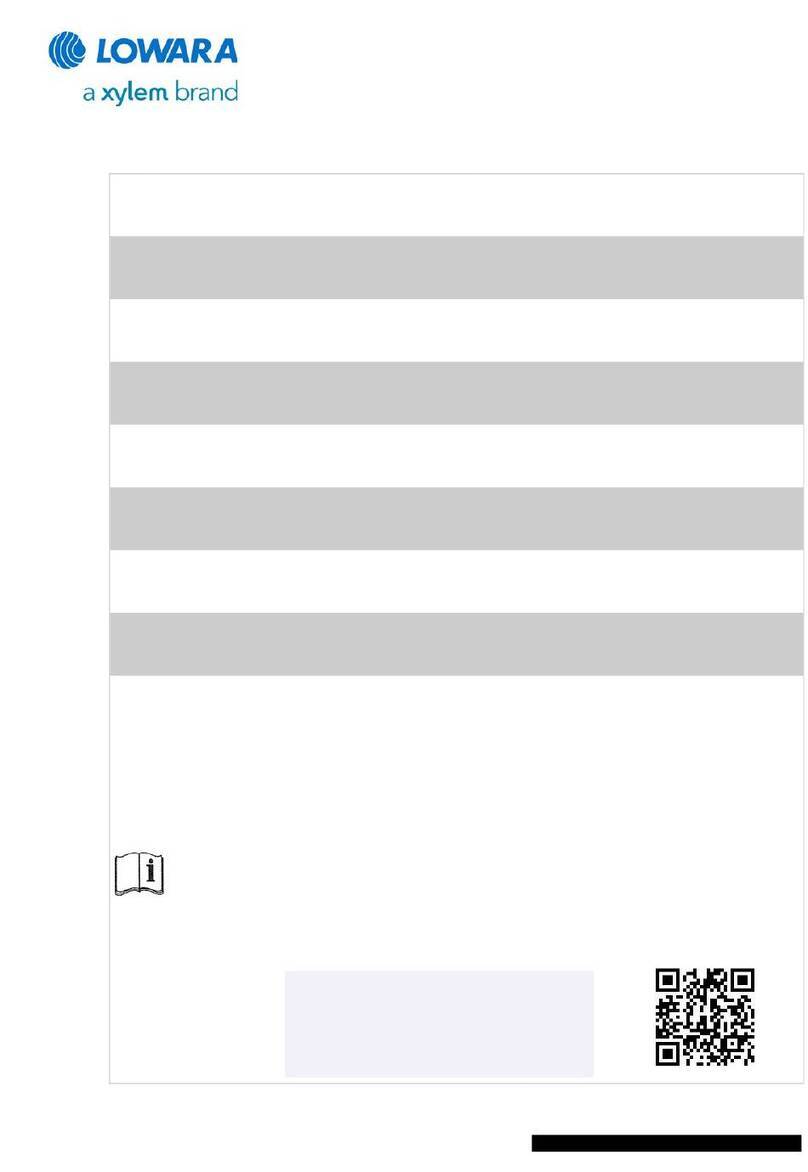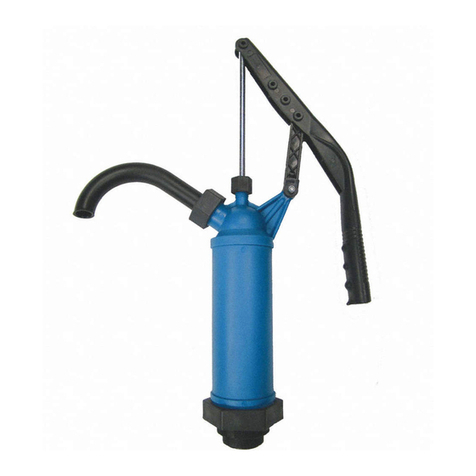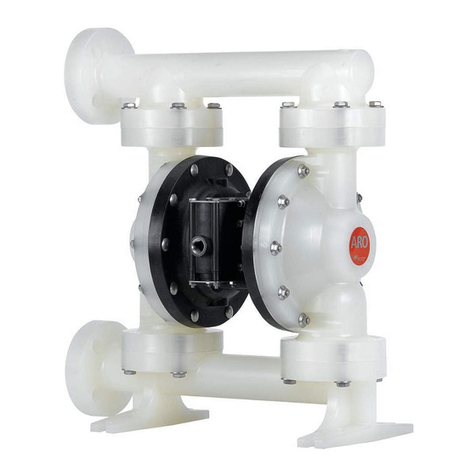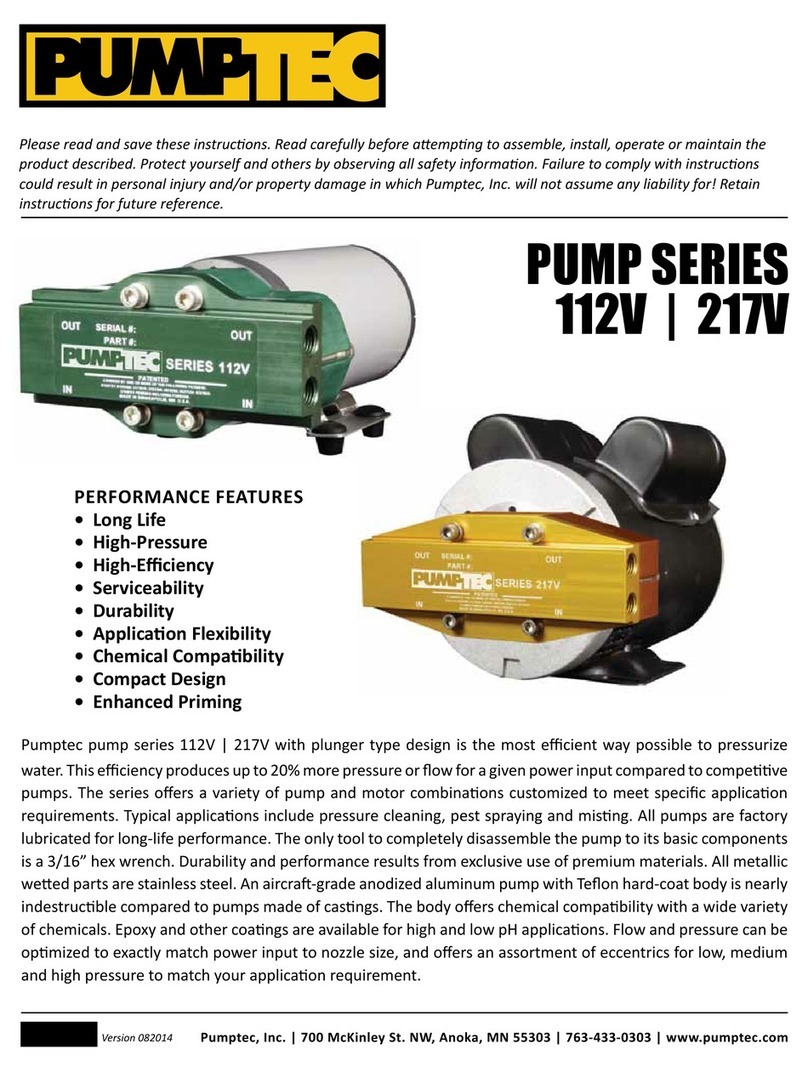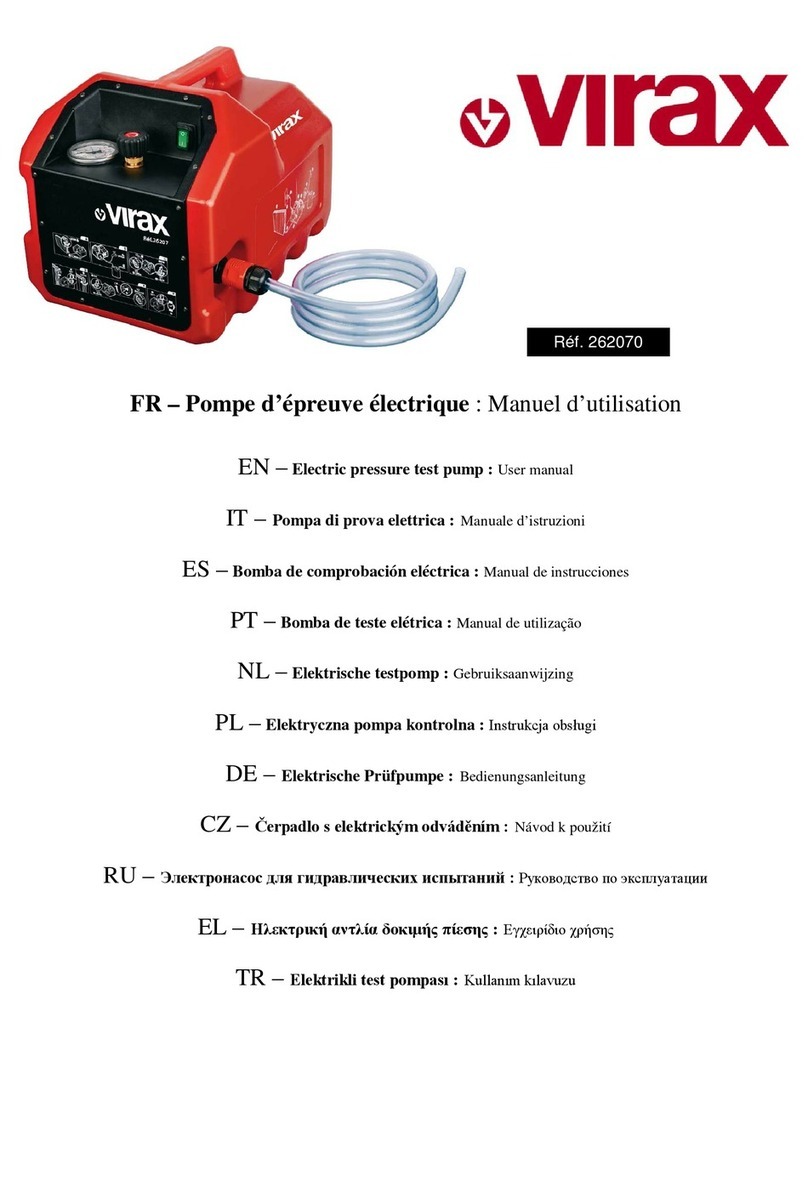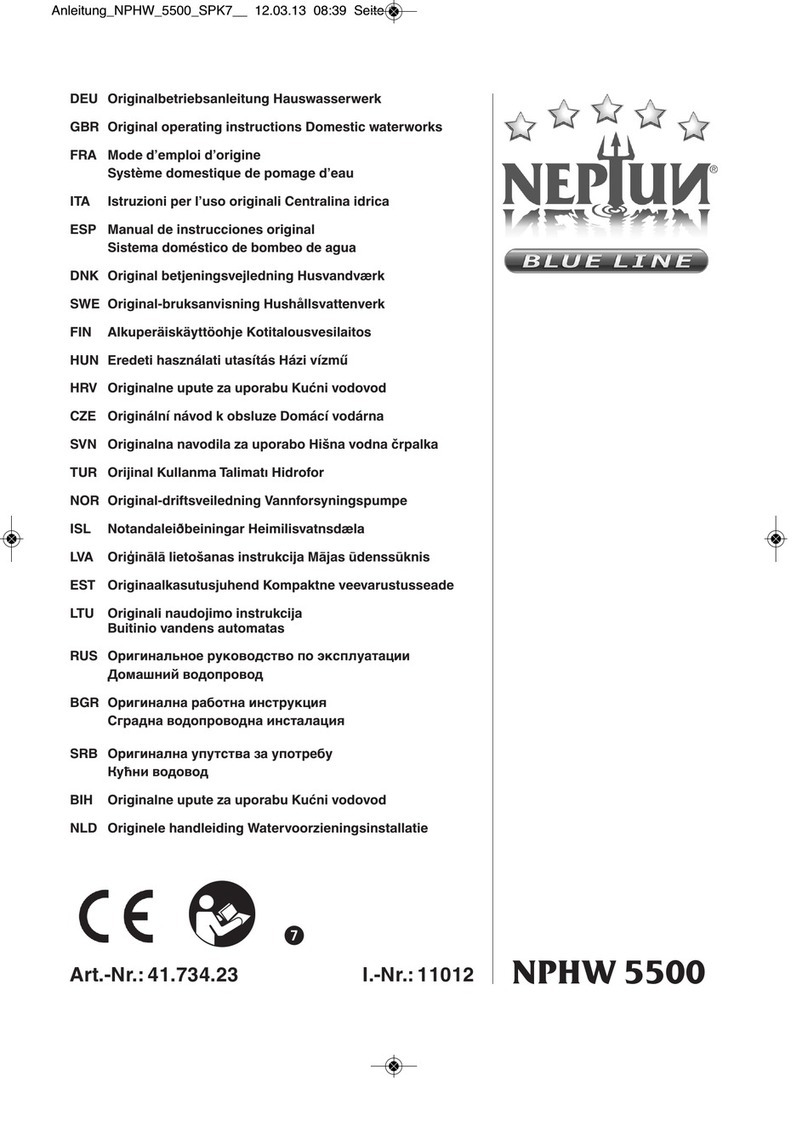the suction side may damage the pump. When the pump operation has been stopped by a closed discharge,
the pressure equilibrium of the diaphragms must be ensured. This can be achieved by keeping the pump
connected to the air supply pressure; for longer stoppage, the pump must be released from the pressure within
the system on both fluid side and air supply side.
Safety hints
•Before putting the pump into operation as well as after some hours of pumping, the housing
bolts [15] have to be fixed according to the torque data of 50 Nm (37 ft lbs), as the elements of
construction "settle". The valve stops discharge valve [6] and the plugs [7] have to be fixed too.
Fixing all these parts is necessary as well after periods of stoppage, at temperature variations,
after transport and dismantling the pump. In case of temperature varying between extremes or
high temperature difference between the liquid and the surrounding, the housing bolts should
be controlled more frequently (interval proposals are available on request).
•Installation, operation, and maintenance by qualified staff only.
•Before start-up of the pump anyone should acquaint oneself with the explanations of the
chapter troubleshooting (see pages 12/13). Only by this the defect quickly can be realized and
eliminated in case of trouble. Problems which cannot be solved or with an unknown reason
should be passed on to the manufacturer.
•Before any maintenance and service procedures arising on the pump or on the optional
equipments, the complete installation has to be turned off and protected against accidental
turn on. This is possible by a lockable emergency stop for the air supply of the pump.
Additional a danger sign against restart should be attached.
•Pressure tests of the plant a pump is included in may only be carried out with the pump
disconnected from the pressure on both ports or by using the pressure the pump develops
while operating. The load of a pressure in the plant may damage the pump.
•Pump must not be operated with a positive suction pressure.
•Depending on the conditions of operation, the liquid conveyed might escape from the pump
through the muffler in case of a diaphragm rupture (in this case muffler has to be replaced).
For further safety requirements the optional equipment diaphragm monitoring and barrier
chamber system are recommended.
•In case of a diaphragm rupture, it might be possible fort he fluid pumped to intrude into the air
side of the pump. In very adverse conditions - e.g. pressure within the fluid system during
stopped air supply - the fluid might as well find its way into the air supply lines. To protect other
devices like pulsation dampers or even pneumatic valves, it is recommended to protect the air
supply line accordingly, e.g. via a non-return valve. This would as well avoid polluting the air
supply line.
•The state of the muffler has to be inspected regularly, as a blocked muffler can be forced out
of the pump. If this happens, damages of properties and/or persons cannot be excluded.
•If the product tends to settle, the pump has to be flushed regularly. For larger solids a filter has
to be installed in the suction line.
•In case of delivery of hot liquids the wetted pump must not standstill for a longer time, because
it could lead to temporary leaks in the valve area and to a blockade of the air control system.
•The relevant effective security advises have to be respected.
•Pools of liquid which appear in the near outer area of the pump have to be inspected on
danger potential, if necessary safety measures are to be taken.
•Chemical and biological reactions in the product chamber of the pump (mixture of different
substances) and the freezing of the liquid have to be avoided.
•Before starting to disassemble the pump, take care that the pump has been emptied and
rinsed. Both ports piping are to be closed and drained if applicable. Further the pump has to be
cut off from any energy on the air and product side. If the pump is being deported from the
plant, a reference about the delivered liquid has to be attached.
•Please respect the relevant additional security advices, if the pump has been used for
aggressive, dangerous or toxic liquids (e.g. suitable protective equipment according to the
safety data sheet of the liquid). In case of a diaphragm rupture, it is possible that residues of
the liquid remain behind the diaphragms, in the area of the air control system and at the
muffler, despite of several flushing processes. Hence, appropriate safety equipment according
to the safety data sheet of the liquid is indispensable.
•Additional advice for handling sensitive Fluids: With correct material choice, all wetted parts
inside the pump are made from materials appropriate for your fluid - selected types as well for
for food contact. A malfunction, however, might result in a contact of the fluid to components
that are non-wetted during normal operation (e.g. inside the air section). Therefore, we
recommend as usual for pumps, to discard the batch after a malfunction when handling
